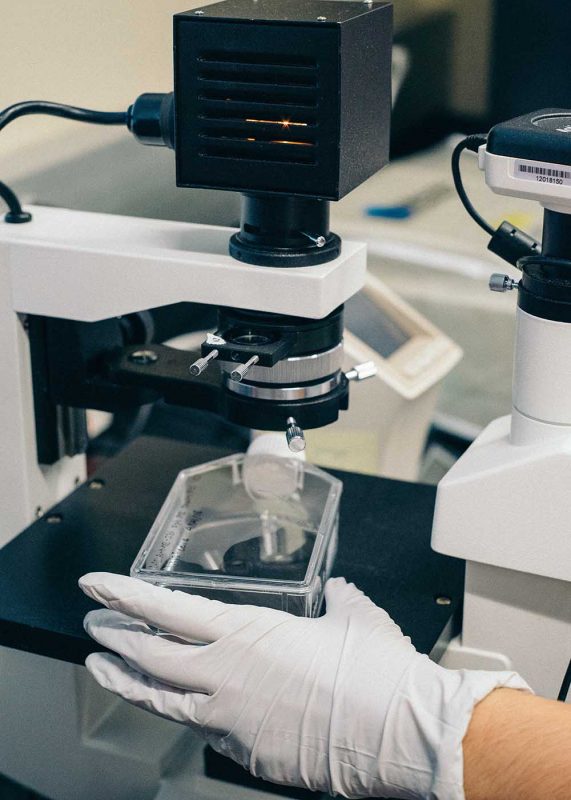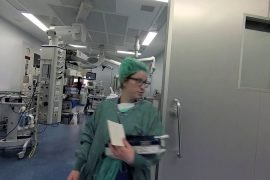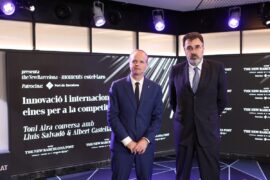[dropcap letter=”I”]
t has just closed a round of financing of 21.3 million euros, the largest in the Spanish biotechnology sector so far this year. It is a very significant success for a young company, but the CEO and founding partner of Minoryx Therapeutics, Marc Martinell, knows that the final success will come when the firm manages to reach the end of the difficult road to develop an efficient drug to combat AMN, a rare neurodegenerative disease that affects the motor function after the age of 20. This is the impulse that led Martinell and two more partners to create Minoryx Therapeutics in 2011: to offer care for rare diseases, those with low incidence and that affect less than 3% of the world population. These are diseases that tend to be left aside by conventional research, the one that is done by the big pharmaceutical companies, and this is the gap that Martinell’s team wants to cover: “As a result of a personal experience I felt the need to do something in a field where others do not work, in order to give an opportunity to improve the lives of these patients”, he explains.
“When researching minority diseases, the clinical study phase is much lonelier, there is much more ignorance, and therefore also many more risks”. On the other side, the advantage, explains the CEO of Minoryx Therapeutics, is that the cost of developing new drugs is usually lower.
 Minoryx Therapeutics research is focused on the development of its drug MIN-102. This molecule is now in phase II and III for the treatment of adrenoleukodystrophy (AMN). If the research conclusions are positive, the company expects to be able to process the authorization for the commercial license between the end of 2020 and the beginning of 2021, both in the United States and in Europe, which would be the last and definitive step to offer a treatment option -now nonexistent- for patients suffering from this degenerative disease. With the entry of new capital, biotechnology also gets the financial cushion necessary to study the possible application of this molecule in two other diseases associated with the central nervous system. It is a challenge, as it is to have attracted more than 40 million euros of funding since its founding for a field as exciting as high risk for investors: “Evidently investors are looking for a comeback for their money, and here we are talking about drugs that will go destined to a small market, and therefore this aspect is more complicated”, recognizes Martinell. To this is added that, unlike what happens with more common diseases -for which there are many companies doing research at the same time- when researching minority diseases, the clinical study phase is much lonelier, there is much more ignorance, and therefore also many more risks”. On the other side, the advantage, explains the CEO of Minoryx Therapeutics, is that the cost of developing new drugs is usually lower.
Minoryx Therapeutics research is focused on the development of its drug MIN-102. This molecule is now in phase II and III for the treatment of adrenoleukodystrophy (AMN). If the research conclusions are positive, the company expects to be able to process the authorization for the commercial license between the end of 2020 and the beginning of 2021, both in the United States and in Europe, which would be the last and definitive step to offer a treatment option -now nonexistent- for patients suffering from this degenerative disease. With the entry of new capital, biotechnology also gets the financial cushion necessary to study the possible application of this molecule in two other diseases associated with the central nervous system. It is a challenge, as it is to have attracted more than 40 million euros of funding since its founding for a field as exciting as high risk for investors: “Evidently investors are looking for a comeback for their money, and here we are talking about drugs that will go destined to a small market, and therefore this aspect is more complicated”, recognizes Martinell. To this is added that, unlike what happens with more common diseases -for which there are many companies doing research at the same time- when researching minority diseases, the clinical study phase is much lonelier, there is much more ignorance, and therefore also many more risks”. On the other side, the advantage, explains the CEO of Minoryx Therapeutics, is that the cost of developing new drugs is usually lower.

In this last round of financing, the biotech company based in the Tecnocampus of Mataró has admitted new members, all international and in this case all Belgians. The investment has been led by Fund+, a fund specialized in the biomedical sector, and has also had the participation of the investment fund in innovation of the government of Wallonia (SRIW), Société Fédérale de Participations et d’Investissement (a fund dependent on the government Belgian), and the private fund Sambrinvest. It is not the first time that the company receives foreign capital. Martinell explains that having the headquarters in Catalonia time ago could be a less attractive presentation letter for venture capital funds, and although “there is still a low critical mass of projects”, he states that “in recent years this has been changing, because the boom in the sector has turned the current initiatives better known, and foreign capital trusts more”. The co-founder of Minoryx Therapeutics also points out that the fact that the cost of living here is relatively lower than in other European countries with prominent biotech hubs, adds another attraction for investors “because it lowers the cost of the entire process of research”.
The new money injection opens new doors for the search of possible therapeutic applications and a new path for the future. Within ten years Martinell imagines the company with clear results to rely on and “having improved the life of the patients who suffer from this disease”. On the way to reach it he recognizes that one of the most difficult challenges is to maintain optimism without generating false expectations in patients: “When you are the only or one of the very few who investigates a disease, inevitably the focus is always on you and you have to measure very well what is being said, so that you do not to frustrate or generate false hopes. “It is, Martinell admits, a very tough responsibility, but at the same time, the reward is also very high, and every time this entrepreneur talks about the possible applications of his research, he cannot prevent the tone of his voice from changing. At the present time, he has already managed to go halfway.




















